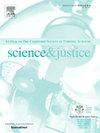南非开普敦与表面分解相关的服装降解的长期定性分析
IF 1.9
4区 医学
Q2 MEDICINE, LEGAL
引用次数: 0
摘要
服装对人类和非人类动物尸体分解过程的影响受到了相当大的关注。然而,很少有人关注腐烂的尸体对全球腐肉相关服装完整性的影响,也没有来自非洲的数据。我们在南非开普敦对与表面分解的猪尸体相关的合成纤维、天然纤维和混合纤维衣服的降解进行了长期(超过三年)的微观和宏观定性分析。五具猪的尸体穿着适合季节的衣服,在开普敦法医感兴趣的茂密的Cape Flats Dune Strandveld上被放置在地面,并在多个季节中分解。从微观上看,合成纤维(腈纶套头衫)、天然纤维(纯棉t恤)和混合纤维(牛仔牛仔裤)的纱线分别在2 ~ 6个月、1 ~ 3个月和1年半~ 2年内发生变形和降解。从宏观上看,合成纤维和混合纤维的衣服在3年零10个月后没有明显的损伤。相反,天然纤维的衣服在2 - 7个月内就会出现多个小洞的损伤,在两年半或更短的时间内,衣服就会完全解体。这项研究首次阐明了与非洲表面分解体相关的衣服降解。我们的研究结果表明,与表面分解的尸体相关的合成纤维、天然纤维和混合纤维衣服的纱线会随着时间的推移以不同的方式降解,这可以作为穿着衣服的死者死亡后最短时间的指标。本文章由计算机程序翻译,如有差异,请以英文原文为准。
Long-term qualitative analysis of clothing degradation associated with surface-decomposition in Cape Town, South Africa
The effect of clothing on the decomposition process of human and non-human animal bodies has received considerable attention. Yet, little attention has been given to the effect of decomposing bodies on the integrity of carrion-associated clothing globally, with no data from Africa. We conducted a long-term (over three years) micro- and macroscopic qualitative analysis of the degradation of synthetic, natural, and mixed-fiber clothing associated with surface-decomposing porcine bodies in Cape Town, South Africa. Five porcine bodies dressed in seasonally appropriate clothing were surface deployed and allowed to decompose over multiple seasons in the thicketed Cape Flats Dune Strandveld, an environment of forensic interest in Cape Town. Microscopically, the yarns of synthetic (acrylic pullover jerseys), natural (cotton T-shirts), and mixed-fiber (denim jeans) clothing were distorted and degraded within two to six months, one to three months, and one and a half to two years, respectively. Macroscopically, synthetic, and mixed-fiber clothing showed no visible damage after three years and ten months. Conversely, damage in the form of multiple small holes was noticeable on the natural fiber clothing within two to seven months, with complete disintegration of the clothing evident within two and a half years or less. This study is the first to elucidate the degradation of clothing associated with surface-decomposing bodies in Africa. Our findings reveal that the yarns of synthetic, natural, and mixed-fiber clothing associated with surface-decomposing bodies will degrade over time in different ways and can be used as indicators of the minimum time-since-death of clothed deceased individuals.
求助全文
通过发布文献求助,成功后即可免费获取论文全文。
去求助
来源期刊

Science & Justice
医学-病理学
CiteScore
4.20
自引率
15.80%
发文量
98
审稿时长
81 days
期刊介绍:
Science & Justice provides a forum to promote communication and publication of original articles, reviews and correspondence on subjects that spark debates within the Forensic Science Community and the criminal justice sector. The journal provides a medium whereby all aspects of applying science to legal proceedings can be debated and progressed. Science & Justice is published six times a year, and will be of interest primarily to practising forensic scientists and their colleagues in related fields. It is chiefly concerned with the publication of formal scientific papers, in keeping with its international learned status, but will not accept any article describing experimentation on animals which does not meet strict ethical standards.
Promote communication and informed debate within the Forensic Science Community and the criminal justice sector.
To promote the publication of learned and original research findings from all areas of the forensic sciences and by so doing to advance the profession.
To promote the publication of case based material by way of case reviews.
To promote the publication of conference proceedings which are of interest to the forensic science community.
To provide a medium whereby all aspects of applying science to legal proceedings can be debated and progressed.
To appeal to all those with an interest in the forensic sciences.
 求助内容:
求助内容: 应助结果提醒方式:
应助结果提醒方式:


